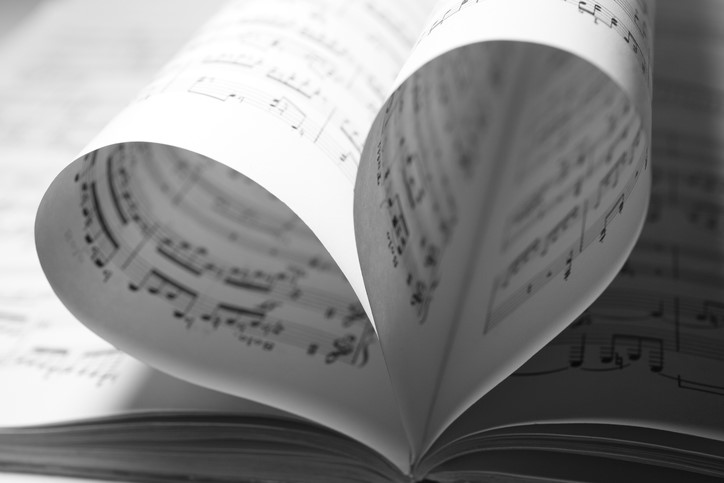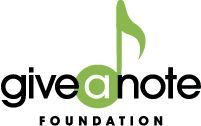The Myth of the Creative Classroom

On a lovely Saturday afternoon, our composer sits at the piano and begins to put melodies together. Maybe they put a crescendo here, a forte there, and some rhythmic counterpoint. Using their deep knowledge of music theory, they consider interesting harmonic movement and possibly, a risky unexpected Napolean 6th chord then voilà, composition done. Ah, the feeling of the creative process, using all the tools you’ve been given to really express yourself confidently.
OR . . .
Our composer is love struck, and they can’t sleep day or night. Their love has left them for another, and the heartbreak is unbearable. They survive days of crushing depression and bouts of emotional torment. They are angry, sad, foolish, and crazy, laughing out loud, and somewhere in the process they find themselves at the piano. This is the only place that understands the pain and provides a voice for their torment.
Hammering out notes over and over again until the right ones happen, nothing seems right, and just when they almost have it, it’s all wrong. Eventually, through many days of trial and failure, they find the perfect mix of heart-wrenching melodies and passionate progressions to emulate their struggle within. When performed, the audience is astounded that this person has found melodies so close to their own heart. The crowd is moved to tears and applauds the composer for their bravery in the darkest moments of their life and the willingness to share it with others.
Music comes from our heart and the soul, from tragedy and triumph. With these emotions so prevalent in our students, how can we use them to the advantage of their musical expression?
Music comes from our heart and the soul, from tragedy and triumph.
Until I began writing music, I really don’t think I could understand the concept of recreating another composer’s true emotional expectation. How do we get past the process of teaching markings and develop the process of expressing the feelings intended by the markings?
Allowing the students to create and explore more often is a great first step. We tend to allow this activity more freely and frequently in younger grades, but by high school, we find ourselves caught in the daily process of preparing the notes for the concert. If we are honest, how do we really tell a 15-year-old to play with more expression if we have never allowed them to openly explore their own idea of expressive playing? Most music students are terrified—no, honestly terrified—of making music without being given direction. Many music rehearsals are mostly an exercise in classroom management and discipline. While I don’t deny the value and need for organized, disciplined rehearsals, when do we get to counter the effort with freedom, chaos, and exploration? I hesitate to say improvisation since that can imply a whole different process. And when I say chaos, I don’t mean, students running around like wild people, although if you can manage it, I say go for it.
If we can set aside the assessments, repertoire, worries, and concert prep, and just concentrate on some unexpected musical exploration, students will be more confident and expressive.
So how do you get there?
For me, there are two rules to teaching expression:
- You must make it simple enough that there is no thought to the execution.
- You can’t describe or dictate the technique to finding it.
The second rule listed above is the most important. You have to let the student train their instincts and learn to develop and trust them. Most importantly, you have to be honest. No student wants to be told “great job” for everything; they have to be pushed too. When you give a student a musical passage to execute with nothing more than your expectation of expression, the actual value of learning music begins.
You can’t tell them, help them, or guide them; they have to take the initiative. This is totally foreign to them. Ironically, visual art classes tend to do this very well. Imagine if in a visual art class, the teacher always dictated the colors and designs. While instructors may give basic and foundational techniques, they don’t say, “Erase that and change that color.” We need to keep our music classes from becoming a march to the concert and find ways to expand individual instinct and confidence.
One technique that I used in a guitar class I called “Live Scoring,” and the kids absolutely loved it. I would pick a couple volunteers. One was the storyteller, one a harmonic instrument, and one a “soloist.” The storyteller would have to begin with maybe an adventure from the weekend or possibly a dramatic boyfriend/girlfriend saga they experienced. I mean how hard is it to find those in high school! While the story goes, the musicians are creating music, in real time and very simply to imply the emotion of the storyline. It’s an incredibly fun exercise and incorporates so many positive elements of music performance and creativity. The music didn’t need to be complex, just dramatic, and I didn’t care how dramatic as long as it was still something we could follow. Really, the more over the top the better—we can always rein in the drama if necessary. It’s such a fun, impromptu musical exercise and will loosen everyone up. After a while, your students will be playing so overly expressive, it will become second nature.
Be bold, be brave, be musical!
 Sean Smith is a member of the Give a Note Foundation Board.
Sean Smith is a member of the Give a Note Foundation Board.
After graduating from University of North Texas, Sean Smith moved to Nashville and began touring with established Country Music Artists, including Big and Rich and Muzik Mafia. As a composer, Smith has received awards for film composition, including a Telly and an Emmy for the short film Running Back to Forward. He has developed a successful music program at the Ensworth School in Nashville and is continuing to develop a unique curriculum that is designed to inspire and engage both teachers and students alike. Currently, Sean is Director of Sales for Quaver Music, in the Northeast region.





